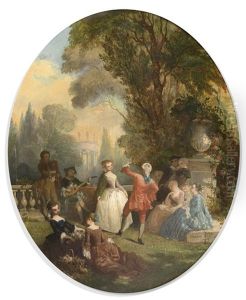Edouard Pils Paintings
Édouard Henri Théophile Pils was a renowned French painter born on October 28, 1814, in Paris, France. He was celebrated for his historical and genre paintings, effectively capturing the spirit and nuances of the 19th century through his detailed and vibrant works. Pils was a prominent figure in the Parisian art world, reflecting the social and political currents of his time through his art.
Pils' education in art began at the prestigious École des Beaux-Arts in Paris, where he studied under influential teachers such as Léon Cogniet. His talent and dedication to his craft were evident early on, and he quickly distinguished himself as a gifted artist. In 1838, Pils achieved significant recognition when he was awarded the Prix de Rome for his painting, marking the beginning of a successful and illustrious career. This prestigious award allowed him to study in Rome, where he was deeply influenced by the masterpieces of the Renaissance and the rich historical tapestry of Italy.
Throughout the 1840s and 1850s, Pils established himself as a master of historical and genre painting. His works were characterized by their meticulous detail, vibrant color palette, and dynamic compositions. Pils had the ability to bring historical events to life, making them resonate with contemporary audiences. He was particularly adept at depicting scenes from French history, earning the admiration of both critics and the public.
Pils' contributions to French art were recognized by the state, and he was awarded various honors, including the Legion of Honour. In 1863, he was appointed as a professor at the École des Beaux-Arts, where he influenced a new generation of artists with his teachings and philosophy on art. Pils continued to paint and exhibit his works, enjoying success and acclaim until his death on July 29, 1875, in Douarnenez, France.
Édouard Pils left an indelible mark on French art, remembered for his ability to capture the essence of his era with elegance and historical accuracy. His legacy is preserved in the collections of major museums across France, including the Louvre, where his works continue to inspire and captivate audiences with their beauty and depth.




